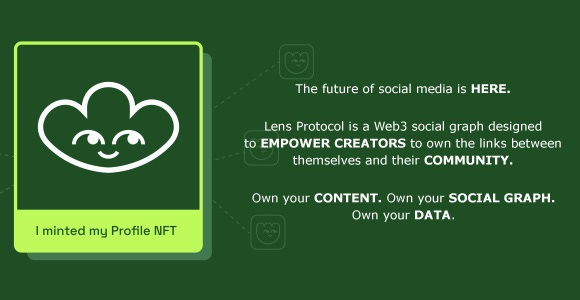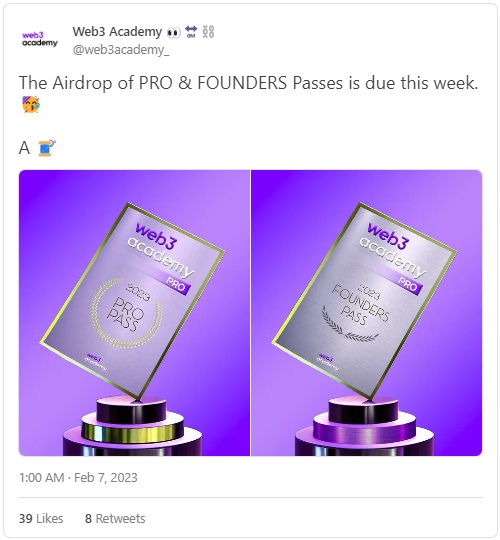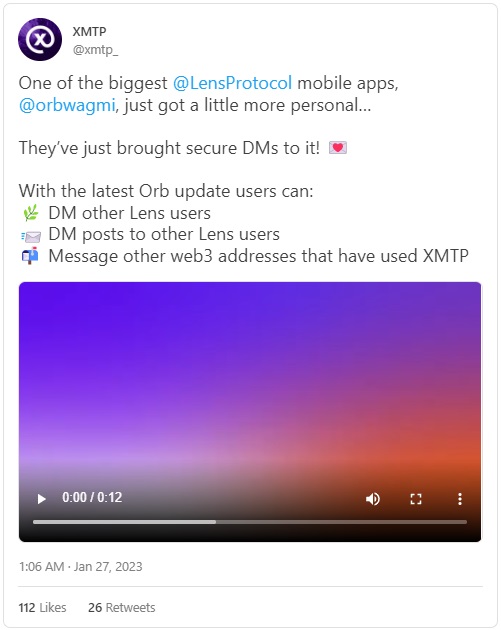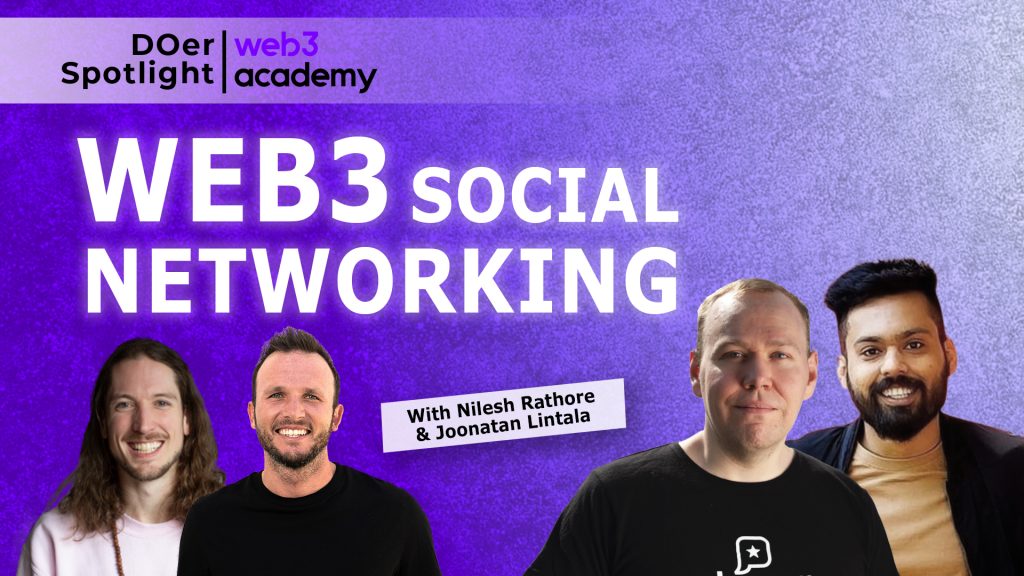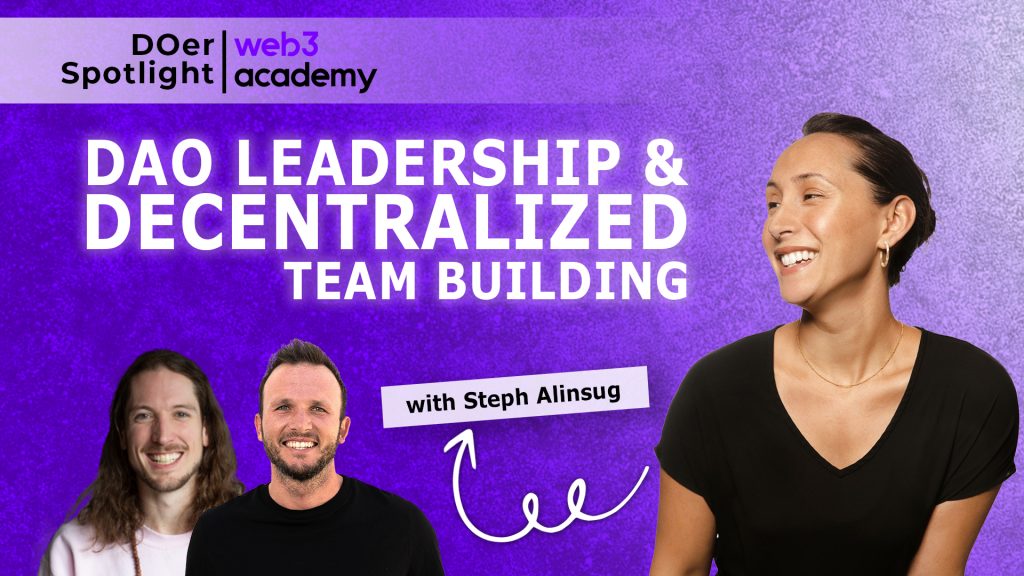
Building the Communication Protocol for Web3
Communication is a key feature of the internet and it's getting a much-needed makeover
Prefer listening? Learn how XMTP Labs is bringing native communication to web3 on your favorite platform 👇
GM DOers!
Right now, internet communication is fragmented af. We have several platforms to choose from including Facebook, Twitter, Discord, and more.
SMS is the protocol for text while SMTP is the protocol for email. What’s the protocol for internet communication? 🤔
Well, there isn’t one standard. Because Facebook, TikTok, Twitter, etc. all use their own closed system for messaging which means they own your DMs.
Luckily, the team at XMTP Labs noticed this and decided to build the communication protocol of web3 so you can own your DMs.
To help us understand what this means and how it works, we invited co-founder Matt Galligan to this week’s DOer Spotlight.
In this episode, we discuss:
- The problems with web2 communication platforms and why using a web3 substrate is a better option ✅
- How the XMTP protocol works—without having to be a giga brain to understand it 🗣️
- And how XMTP Labs (the company behind the protocol) is driving adoption 📈
Note: We’re looking for another writer to join our ranks and help us create kick-ass content! So if you’ve got a knack for words and a passion for web3, learn more about the role today.
Let’s dive in.
👉 Brought to You by Lens: The Future of Social Networking 👀
What’s Wrong With Web2 Communications?
Right now, we have a few different internet communication layers. We have mobile which includes SMS and iMessage for iPhone users, phone numbers, and in-app communication (Instagram and Facebook Messenger).
In particular, app communication is powerful due to its social element where stories and posts ignite conversations with people who aren’t even close friends or relatives. Then you also have WhatsApp for group chats and perhaps more formal conversations.
While this gives us many choices, you have to enter a specific app to interact with certain people. 😵
This phenomenon makes communication fragmented and means users like you and I don’t own our data, history, or accounts. For example, Kyle used to run a business in the health space through Facebook, but one day the platform decided to close his account.
Just like that, he lost his account and its history and had to start back from square one. 😓
But if it was built on a web3 substrate, he wouldn’t have lost his social data.
It’s not just an issue for entrepreneurs either. Think of all the photos, conversations, and memories with family and friends that can disappear overnight.
Another issue is a lack of interoperability. You can’t take your profiles and account history between messaging platforms so you end up with fragmented chat histories.
I sometimes have multiple conversations with the same person across different platforms!

Interoperability also reduces the switching costs for users which can ultimately improve a platform’s UX.
For example, Instagram started as a photo-sharing application and has since turned into something different. If you aren’t a fan of the direction they took, there isn’t much you could do unless you wanted to stop using the platform and lose your followers and conversations in the process.
But if it was built with interoperability in mind, you could simply take your history to a platform that’s a better fit, forcing platforms to act in the best interests of their users. 💪
That’s why Matt and the team are building XMTP, to allow people to own and control their communications and have the ability to pick which messaging applications they use without pigeonholing themselves by building long histories on a particular platform.
This solves the problem of builders and businesses not having a web3-native communication method along with giving users ownership over their conversations and data.
But why not just use email?
Firstly, Matt believes that email is amazing in that as a protocol, SMTP (Simple Mail Transfer Protocol) has stood the test of time and has become one of the primary communication methods today.
However, there are a couple of challenges.
Matt estimates that upwards of 90% of emails sent today are spam.

Thankfully, email providers spend millions on their spam filters and tools, otherwise, email would be very difficult to use.
However, this leads to another problem—centralization. Previously, email servers were more decentralized (you could even run your own!) but as spam emails proliferated, it became increasingly difficult to combat.
So now we only have a handful of platforms (Google, Yahoo, etc.) that are good at managing spam and providing valuable tools, such as calendars, online file storage, etc. 🤷
Consequently, when we send emails we must ensure that they pass these providers’ spam filters and to do that we generally have to use the same big platforms to send those emails.
That leaves us with a major element of centralization within an otherwise decentralized protocol (no one owns SMTP).
However, XMTP could be the solution. ✅

PRO ANNOUNCEMENT
We recently airdropped the first round of PRO and Founders Passes. Besides being a nice addition to their wallets (shout out to Valentina for the killer design), it also gives our members exclusive access and perks in web3!
We’re airdropping the 2nd batch of passes in the next 24 hours. Go PRO today so you don’t have to wait another week for your perks. 😉
P.S.: If you’re a PRO member and haven’t received your Pass yet, keep an eye out for tomorrow’s PRO Report. We’ll share a form that you need to fill out so we know where to send it!
What is XMTP and How Does it Work?
XMTP is a protocol where fully encrypted communications can happen between different accounts, such as web3 wallets. 🔒
This means that even Matt couldn’t access your messages. The only way someone could read them would be if they had access to your wallet keys.
The team chose the name XMTP by looking at the protocol’s primitives (mail and decentralization) and combined it with the name of existing protocols. This combination included SMTP and another protocol called Jabber (whose technical name was XMPP (Extensible Message and Presence Protocol).
Through this process, they landed on XMTP (Extensible Message Transport Protocol). ✅
Outside of this, it was also about analyzing these existing protocols to figure out what worked well and what could be improved upon rather than simply using the names as inspiration.

Here’s how it works: I could sign into the protocol with a MetaMask wallet then input either the raw 42-character 0x address or another identifier, such as an ENS handle, and use that to chat with the owner of another account through encrypted messaging.
One of XMTP’s use cases is for dApps to communicate important information, such as airdrops or announcements directly to your wallet address. You can think of this as web3 push notifications. 🔔
In a nutshell, XMTP is the rails that allow developers to add communication functionality to their dApps.
For the devs out there, Matt shared that you can add push notifications, email, text messaging, and several other communication formats to your dApp as easily as adding any other code package!
But instead of this information being siloed in a particular dApp, it’s transportable across all of web3, kind of like a universal inbox.
So you could message someone through a marketplace interface and they could reply through any interface of their choice (think wallet, DEX, or even a different marketplace) without history fragmentation.
To use a web2 example, this would be like having one application for all your conversations across different platforms. For example, you’d have your AirBnB conversation in the same application as your Instagram messages.
Matt also shared that each of these experiences can be filtered down from this point to improve usability. 🙌
Since the base-level protocol is permissionless, it accepts any kind of message payload but additional front-end interfaces will be able to filter out things like spam and unsolicited messages.
However, since the messages are sent over XMTP, you’d always have access to all of them if you use the right interface.
On top of this, the team is serious about data encryption and privacy, minimizing the amount of metadata that third-party observers can glean from your on-chain communications.
This means that third parties can’t tell who is talking to who so they can’t exploit users through targeted advertising.
Outside of that, apps built on the protocol do have the ability to change the way you can interact with your messaging or even take the interface away from you. But the underlying data is still there, meaning you could switch interfaces and resume exactly where you left the other platform.
The good news is that XMTP already has hundreds of client interfaces so the chances of not being able to access the protocol are slim to none. 💪
🤝 Together with Kazm: The All-In-One Tool for Building a Thriving Web3 Community
Are you building a community in web3? Then you need Kazm, the tool we use to onboard our members and launch data-driven campaigns that optimize growth and engagement.
How XMTP Labs is Driving Protocol Adoption
Matt believes that one part of their success so far is that there’s a general interest in communication solutions since we simply don’t have any web3 native ones at the moment.
Outside of that, the goal of XMTP Labs is to keep the protocol as simple as possible for the end user as well as for devs to integrate it into their products. This means having high-quality developer documentation which includes examples that devs can follow to get up and running in under 30 minutes.
It’s all about keeping the experience dialed in for everyone involved! 😁

XMTP Labs also attends every hackathon where they think their participation would be valuable as it gives them the opportunity to interact with tons of devs in real time.
This helps them figure out the challenges that people are experiencing and the features they gravitate towards so that they can provide better documentation and build a valuable protocol.
It’s also a way to spread the word about XMTP as a product. 🗣️
On top of this, XMTP Labs is extremely intentional about its investor base (think leaders of communities, other protocols, and dApps) as a high-quality network is key for driving adoption through network effects—aka Metcalfe’s Law.
Because if there’s no one receiving (or interacting with) the messages you’re sending, you’d be less inclined to use the protocol in the future.
Metcalfe’s Law is beginning to play out for XMTP in the Lens ecosystem right now. We recently saw Orb launch a secure DM layer with other dApps planning to follow suit.
Eventually, this can lead to a mass effect where XMTP becomes the default option because most of the ecosystem uses it.
It also becomes easier for subsequent projects to adopt the communication protocol because they have a playbook to follow and they can learn from the mistakes of previous integrations.
But before dApps can adopt the protocol, XMTP needs people to stand up servers (nodes), so why would anyone do that? 🤔
Matt believes both intrinsic and extrinsic factors play a role.
You can think of intrinsic incentives as entities having a personal reason for wanting the network to exist. In this regard, an entity will bear the cost of ensuring the network functions as it should.
This could come from applications, such as NFT marketplaces since having a high-quality messaging protocol can improve the trading experience. Consequently, these applications may even be happy to run the servers at a loss because it benefits them in other ways.
Matt believes that intrinsically motivated providers are a crucial part of a high-performing protocol because they keep everything running smoothly when extrinsically motivated actors jump ship.
Extrinsic incentives in web3 usually come from things like token emissions (or penalties). 🪙
For example, server providers could be able to run a profitable business as long as they act in the best interests of the network. If they don’t, XMTP could implement penalties (similar to how Ethereum node providers can have their stake slashed).
Matt also shared that having economic components are a core part of a communication protocol because it helps control spam messaging.
For example, this could be messaging limits or messages only used for personal reasons. Another option could be to bake a reputation measure into each address to prevent spammers from creating multiple accounts to get around limits.
While XMTP Labs is still working out what the best option is, economic costs (whether monetary or time-based) will be a key part of the protocol.

SOCIALS
Tweet of the Week
Web3 is the Future So a Native Communication Protocol Simply Makes Sense
Web3-native messaging is a key primitive that can help improve the UX in the space for end users.
For example, one use case will be an improvement in web3 support.
Right now, if you ask for help on Twitter, you’re bound to get replies from a ton of bots that share phishing links in hopes that they can gain access to your wallet. 🤦♂️
The same even happens on Google search where spammers buy ads and pose as legitimate businesses to get you to use a dummy site that can capture sensitive information or be used to access your computer.
The cool thing about web3 is that we can avoid this situation by using a block explorer to see when an ENS domain (or another identifier) was created to determine the legitimacy of the controlling wallet that has messaged us.
Then if we trust the root domain, we’d be happy to interact with it and any associated sub-domains going forward. ✔️
Another cool part about having these addresses on-chain is that you could use XMTP to get in touch with wallets that have interacted with particular protocols or currently own (or have owned) an asset.
Matt shared that you can almost think of the blockchain as a giant phone book when combined with XMTP!
However, XMTP is the starting point we still need dApps that build on top of the protocol to improve how we interact with these messages in the same way that Google filters spam and manages our email inboxes for us.
That’s it for now, frens. See you on Thursday!

FOR THE DOERS
Take Action & Level Up
READ
Catch up on Monday’s Deep Dive: Community Performance Marketing: Taking Web3 Growth to the Next Level.
JOIN
Tired of not having a web3 playbook? Then join Web3 Academy PRO today to enjoy weekly on-chain reports that show you which businesses, business models, and tactics are winning in web3.
LEARN
While XMTP unlocks direct web3 communications, your community still needs somewhere to hang out. Learn: Why Discord Is The Future of Online Communities.




